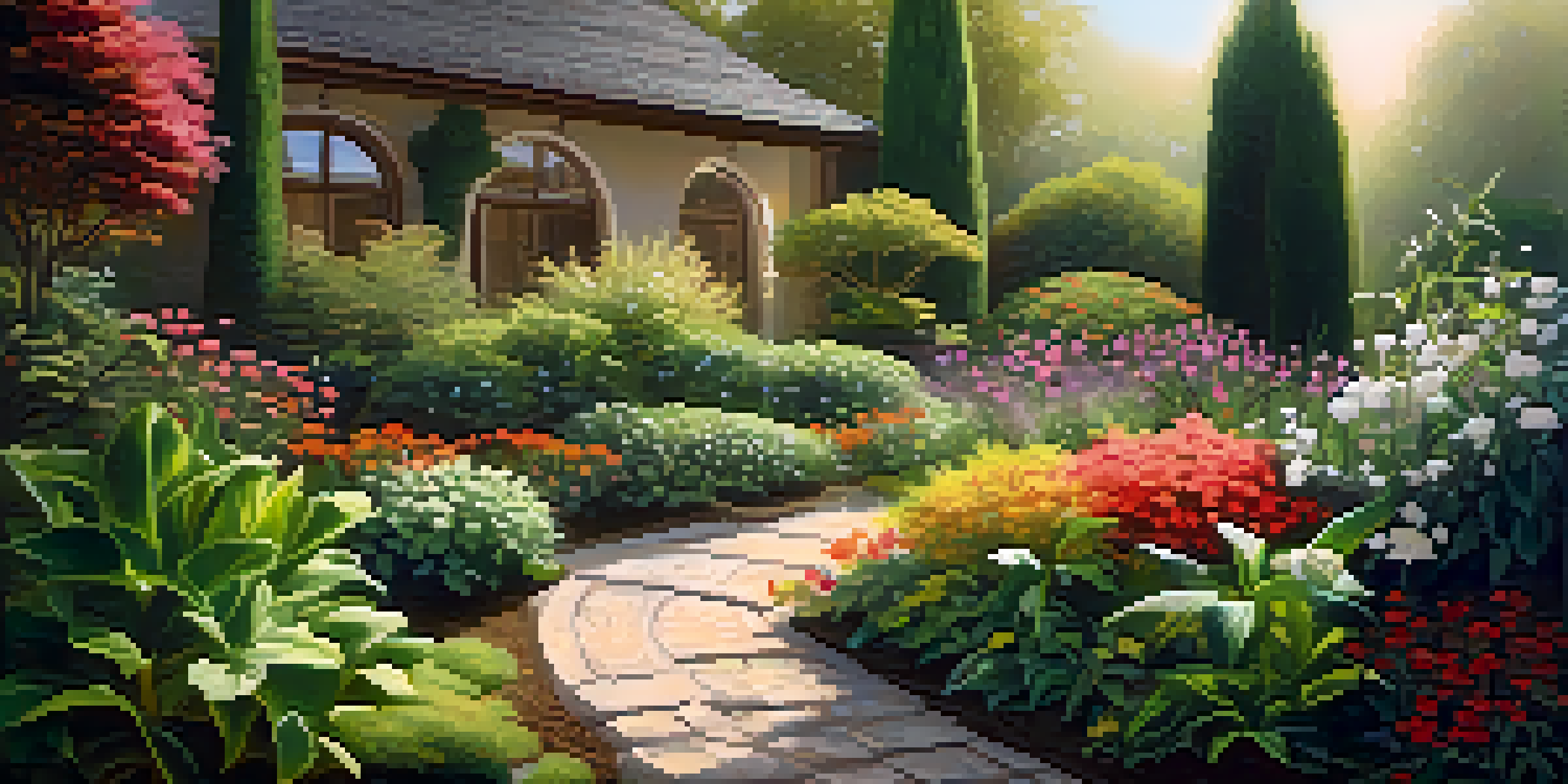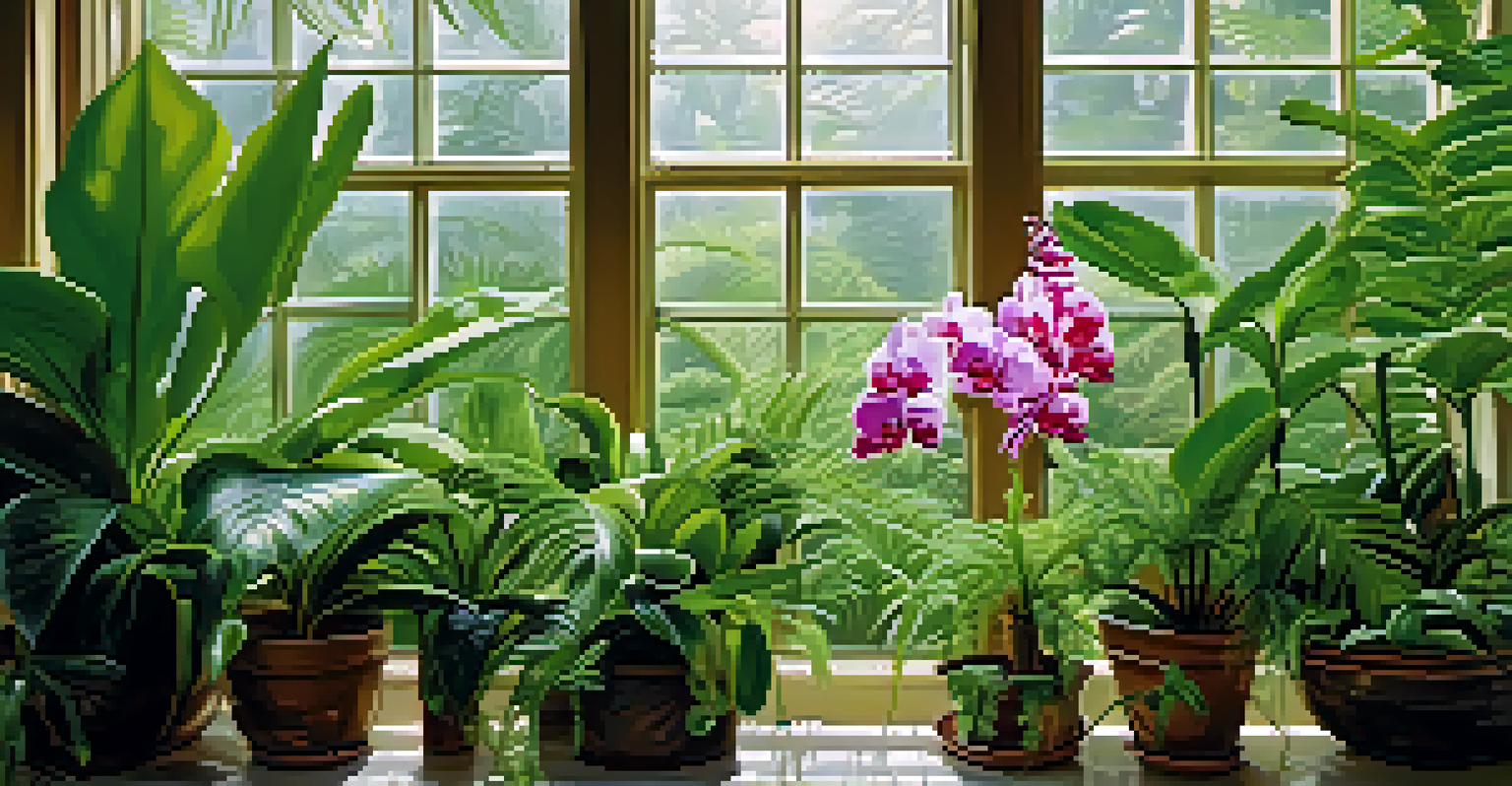The Importance of Humidity Levels for Plant Health

What is Humidity and Why It Matters for Plants
Humidity refers to the amount of moisture present in the air. For plants, this moisture is critical as it affects their ability to absorb water and nutrients. High humidity can promote lush growth, while low humidity can lead to stress and wilting.
Plants and humans are much alike; we all require the right environment to thrive.
Understanding humidity is essential for plant care, whether you're growing houseplants or maintaining a garden. Just like humans feel uncomfortable in extreme conditions, plants also struggle when humidity levels are not optimal. This means paying attention to your plants' environment is key to their health.
By monitoring and adjusting humidity levels, you can create a thriving atmosphere for your plants. This consideration can lead to more vibrant foliage, better flowering, and overall improved plant vitality.
Effects of Low Humidity on Plant Health
Low humidity can cause a variety of issues for plants, such as leaf browning and wilting. When the air is dry, plants lose moisture faster than they can absorb it, leading to dehydration. This stress can stunt growth and even result in plant death if not addressed.

For example, tropical plants like ferns and orchids thrive in high humidity. If kept in a low-humidity environment, they may develop crispy leaf edges and drop leaves prematurely. This scenario illustrates the importance of matching plant needs with environmental conditions.
Humidity Affects Plant Growth
Humidity is crucial for plants as it influences their ability to absorb water and nutrients, impacting their overall health.
In addition to physical symptoms, low humidity can make plants more susceptible to pests and diseases. Stress weakens plants, making them easier targets for infestations, which can create a vicious cycle of decline.
Benefits of High Humidity for Plant Growth
On the flip side, high humidity can be a boon for many plants. It helps maintain moisture levels in the soil and around the foliage, allowing plants to flourish. This is particularly true for species native to humid environments, as they have adapted to thrive under such conditions.
Just as rain is essential for growth, humidity plays a pivotal role in nurturing healthy plants.
When humidity is high, plants can photosynthesize more effectively, leading to faster growth and healthier leaves. Think of it as a spa day for your plants, where they can soak up the moisture and nutrients they need for optimal health.
Furthermore, high humidity can enhance flowering and fruiting in certain plants. This means that if you’re aiming for a bountiful harvest or beautiful blooms, maintaining higher humidity levels can give your plants the boost they need.
How to Measure Humidity Levels for Your Plants
To effectively manage humidity, you'll first need to measure it. Hygrometers are handy tools that can provide accurate readings of humidity levels in your environment. You can find both analog and digital options, and they’re relatively easy to use.
Place the hygrometer near your plants and check the readings regularly. Most houseplants thrive in humidity levels between 40% and 60%. If your readings fall outside this range, it may be time to take action to adjust the humidity.
Low Humidity Causes Plant Stress
When humidity levels are low, plants can suffer from dehydration, leaf browning, and increased susceptibility to pests.
Regular monitoring helps you create a more stable environment for your plants. By being proactive, you can address any fluctuations in humidity before they impact plant health.
Ways to Increase Humidity for Indoor Plants
If you find your indoor humidity levels too low, there are several strategies to boost them. One popular method is to group plants together, as they naturally increase humidity through transpiration. This creates a mini-ecosystem that benefits all the plants involved.
Another effective approach is to use a humidifier in the room where your plants are located. This can provide a consistent level of moisture in the air, helping your plants thrive. Just be sure to monitor humidity levels to avoid over-saturation.
You can also try placing water trays with pebbles beneath your plants or misting them regularly. Both methods can help raise humidity levels without overwhelming your plants, ensuring they remain healthy and happy.
The Role of Humidity in Soil Health
Humidity doesn't just affect the air around plants; it also influences soil health. High humidity can keep soil moist, which is essential for root development and nutrient absorption. Healthy roots are the foundation of strong, resilient plants.
Conversely, low humidity can lead to quick evaporation of moisture from the soil, causing it to dry out faster. This can result in under-watered plants, leading to stress and potential root damage. A well-balanced humidity level helps maintain that delicate equilibrium.
High Humidity Boosts Vitality
High humidity promotes faster growth, better flowering, and healthier leaves, especially for plants native to humid environments.
By ensuring the right humidity, you’re not only caring for the plants themselves but also nurturing the soil ecosystem that supports them. This holistic approach to plant care can yield impressive results.
Conclusion: Humidity as a Key Factor in Plant Care
In summary, humidity plays a crucial role in the overall health and growth of plants. Whether you're dealing with indoor houseplants or outdoor gardens, understanding humidity levels can make a significant difference. It affects everything from leaf health to root development.
By regularly monitoring and adjusting humidity levels, you can create ideal conditions for your plants to thrive. Remember, happy plants are often the result of carefully managed environments.

So next time you're tending to your plants, take a moment to consider the humidity. A little attention to this factor can lead to a lush and vibrant garden or indoor oasis.